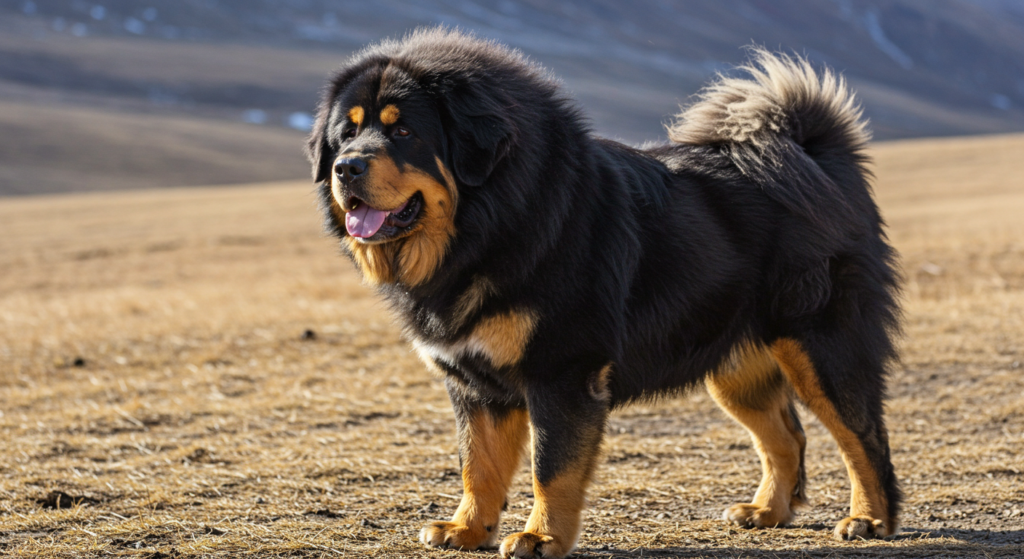Table of Contents
- Introduction
- Origins and History
- Physical Characteristics
- Temperament and Behavior
- Care and Maintenance
- Conclusion
- FAQs
Introduction
The Tibetan Mastiff is a majestic and powerful dog breed originating from the Himalayas. Known for its dense, insulating coat, this breed is well-adapted to survive in harsh, cold climates. Revered for its guarding abilities and loyal nature, the Tibetan Mastiff has become a symbol of strength and resilience. This article delves into the origins, characteristics, and care requirements of this remarkable breed.

Origins and History
The Tibetan Mastiff has a rich history dating back thousands of years. Originating in the Himalayan region, this breed was primarily used by nomadic tribes to guard livestock and property from predators like wolves and snow leopards. Their imposing size and protective instincts made them invaluable to their owners. Over time, the breed gained recognition beyond the Himalayas and became a sought-after companion and guardian worldwide.
Physical Characteristics
The Tibetan Mastiff is a large, muscular dog with a commanding presence. One of its most distinctive features is its dense, double-layered coat, which provides excellent insulation against extreme cold. The coat comes in various colors, including black, brown, blue, and gold. Their broad head, strong jaws, and expressive eyes add to their striking appearance. Adult males can weigh between 90 to 150 pounds, while females are slightly smaller.
Temperament and Behavior
Despite their intimidating size, Tibetan Mastiffs are known for their calm and loyal demeanor. They are highly protective of their family and territory, making them excellent guard dogs. However, they can be reserved around strangers and require proper socialization from a young age. This breed is intelligent and independent, which can sometimes make training a challenge. Early and consistent training is essential to ensure they develop into well-behaved companions.
Care and Maintenance
Owning a Tibetan Mastiff requires a commitment to their care and well-being. Their thick coat needs regular grooming to prevent matting and tangling. Brushing at least twice a week is recommended, with more frequent grooming during shedding seasons. Due to their size, they need ample space to move around, making them better suited for homes with large yards. Regular exercise is crucial to keep them physically and mentally stimulated. Additionally, a balanced diet and routine veterinary check-ups are essential for their overall health.
Conclusion
The Tibetan Mastiff is a remarkable breed with a rich history and unique characteristics. Their dense, insulating coat and protective nature make them well-suited for cold climates and guarding roles. While they require dedicated care and training, their loyalty and majestic presence make them a rewarding companion for the right owner.
FAQs
1. Are Tibetan Mastiffs good family dogs?
Yes, Tibetan Mastiffs can be excellent family dogs, especially in households with older children. They are loyal and protective but require proper socialization and training.
2. How much exercise does a Tibetan Mastiff need?
Tibetan Mastiffs need moderate exercise, such as daily walks and playtime in a secure area. They are not overly active but enjoy having space to roam.
3. Are Tibetan Mastiffs easy to train?
Tibetan Mastiffs are intelligent but can be independent and stubborn. Consistent, positive reinforcement training is essential for success.
4. Do Tibetan Mastiffs shed a lot?
Yes, Tibetan Mastiffs have a thick coat that sheds seasonally. Regular grooming is necessary to manage shedding and keep their coat healthy.
5. Can Tibetan Mastiffs live in hot climates?
While they can adapt to warmer climates, Tibetan Mastiffs are best suited for cooler environments due to their thick coat.
